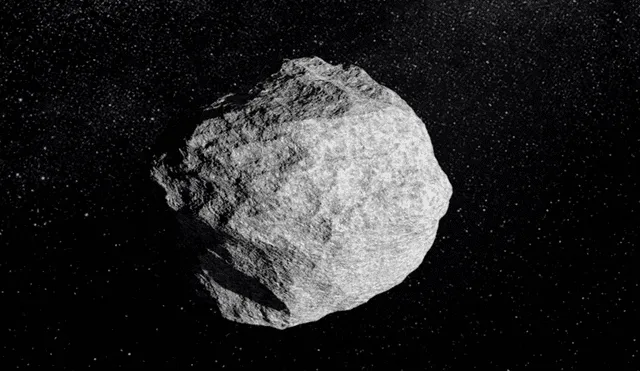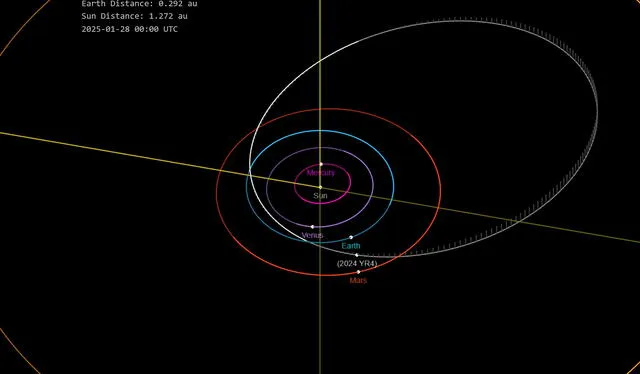NASA warns asteroid passing by in 2032 has a chance of impacting Earth
A meteoroid the size of a football field could be on a collision course with Earth in 2032. While the risk remains low, NASA is taking no chances, using advanced tracking and mitigation plans to prepare for any scenario.

The National Aeronautics and Space Administration (NASA) has identified asteroid 2024 YR4 as a possible hazard, with a small chance of striking Earth on December 22, 2032. Initially detected by the ATLAS survey in Chile, it was observed in late 2024 and is estimated to be between 40 and 90 meters wide. Early calculations indicated a 1% likelihood of impact, but updated data has increased the probability to 2.1%, leading to a Torino Scale rating of 3, indicating a rare but noteworthy risk.
A collision with the celestial body could unleash energy comparable to the Tunguska explosion of 1908, which flattened vast areas of Siberian forest. Possible impact zones, known as the risk corridor, span the eastern Pacific, northern South America, portions of Africa, the Atlantic, the Arabian Sea, and South Asia. At present, the asteroid is roughly 48 million kilometers away and is expected to pass safely in 2028 before its projected close approach in 2032.
Asteroid 2024 YR4 a rare but monitored event
Space agencies worldwide are analyzing heavenly body 2024 YR4, a newly identified object with a slim chance of colliding with Earth. Its trajectory, still under study, suggests a potential close encounter in 2032. While the odds of impact remain low, even a small asteroid can cause considerable damage if it enters the atmosphere. Scientists are gathering more data to improve predictions and determine if any precautionary measures will be necessary.
Unlike larger, well-documented meteoroids, 2024 YR4 was only recently discovered, highlighting the ongoing challenge of detecting smaller space objects in time. Tracking systems like NASA’s Sentry and European Space Agency (ESA) monitoring programs are working to refine calculations and assess potential outcomes. As research continues, experts emphasize the importance of planetary defense strategies to address similar threats in the future.
Monitoring and risk assessment of the near-Earth object
Experts are closely tracking this space rock to refine its projected path and determine the likelihood of impact. Observations over the past months have slightly increased its estimated probability, prompting space agencies to intensify their analysis. By using advanced telescopes and radar systems, researchers aim to reduce uncertainty and provide a clearer picture of its movements in the coming years.
Both NASA and the European Space Agency are independently verifying calculations to ensure accuracy. The asteroid’s next close approach in 2028 will offer a valuable opportunity to collect more precise data. While current models suggest a low probability of impact, ongoing surveillance is essential for updating forecasts and exploring potential mitigation strategies if necessary.

A calculated course, analysts monitor the trajectory of asteroid 2024 YR4 in deep space. Photo: NASA Science
Preparedness and possible response plan
Technologists are evaluating different methods to prevent a potential impact, should the threat increase. Proposed techniques include using kinetic impactors to alter its trajectory or gravity tractors to gradually shift its path. The effectiveness of these approaches depends on early detection and precise calculations, making continuous monitoring crucial in determining the best course of action.
Public awareness plays a vital role in planetary defense. Understanding how space agencies track and manage near-Earth objects helps reduce misinformation and unnecessary panic. NASA, ESA, and other organizations are committed to providing regular updates and working with international partners to develop coordinated programs, ensuring that humanity is better prepared for future cosmic hazards.












